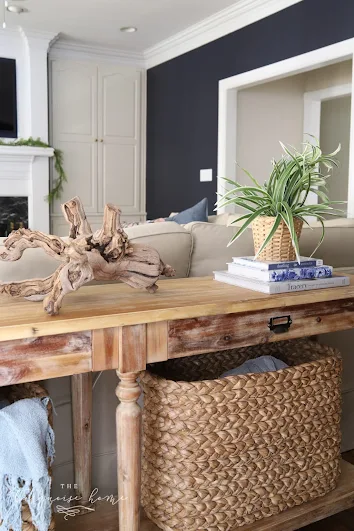The Power of the Sofa Table: Function, Structure, and Movement in Design
The sofa table is one of the most underrated pieces of furniture in home design. Too often, it is seen as a simple surface placed behind a couch, forgotten except when needed to hold a lamp or a decorative bowl. But when used thoughtfully, the sofa table can reshape a room. It brings function, creates structure, and adds a sense of movement that walls and larger furniture cannot provide. This narrow, unassuming table can anchor a room, guide foot traffic, and define spaces without relying on heavy architectural changes. To understand its value, you must see it as an accessory and an active player in how a space lives and breathes.
Moving furniture away from the walls is one of the most transformative choices in a room. Many instinctively push sofas, chairs, and tables against walls, thinking it will make a room feel larger. In reality, it often does the opposite. Lining a room’s perimeter with furniture leaves the center hollow and aimless, draining the room of energy. Bringing pieces into the middle of the space and using a sofa table behind a floating sofa creates natural walkways and zones. The room gains shape and flow. Movement becomes guided and intentional instead of accidental and awkward. The sofa table is key in supporting this arrangement, giving structure to what might feel unfinished or disjointed.
A sofa table provides a function far beyond holding decorative objects. It acts as a bridge between different room parts when placed behind a floating sofa. It gives you a surface for task lighting, setting down drinks, or putting books within easy reach. In open-plan homes, the sofa table helps divide large spaces into smaller, more intimate areas without needing walls or partitions. It subtly draws between living and dining zones or sitting and reading nooks. The table’s height, just a few inches lower than the sofa back, keeps the eye moving without creating visual barriers. Its long, lean shape respects the space while offering the convenience and grounding that loose furniture often lacks.
Beyond function, the sofa table adds a sense of structure that rooms desperately need. A room with seating and nothing to anchor it can feel loose and unstable. The sofa table acts like a spine, supporting the sofa while connecting it to the rest of the room. This is especially important in larger spaces, where furniture can float without any clear relationship to the walls or floor. With a sofa table, you introduce a horizontal line that stabilizes the furniture grouping, helping everything feel more intentional and cohesive. Its structure is quiet but unmistakable, giving your space the kind of thoughtful, layered design that feels comfortable rather than chaotic.
Movement is another critical element that the sofa table brings to a room. When a sofa sits directly against a wall, the room’s movement is restricted to the center, creating a static, predictable flow. Floating the couch with a table behind it changes the rhythm of the space. People walk behind the sofa, around it, and through it. The room breathes. The energy shifts from being boxed along the edges to circulating throughout the space. This simple trick can make a space feel larger, more functional, and more welcoming in smaller homes and apartments without knocking down walls or investing in custom furniture.
A well-chosen sofa table can also support the emotional feel of a room. A solid wood table with weight and texture can bring warmth and groundedness to a minimalist space that might otherwise feel cold. A slender metal and glass table can add lightness and air to a room with heavy, upholstered furniture. The table’s material, size, and finish contribute to the room’s personality. It is a chance to inject character without overwhelming the other elements. Some sofa tables offer hidden storage through drawers or shelves, which adds even more function, keeping everyday clutter out of sight while preserving the clean, open look of the room.
Designing with a sofa table is about more than just finding a place for another piece of furniture. It is about embracing the idea that rooms should flow, function, and feel grounded. A good sofa table helps you create boundaries without shutting down movement. It offers structure without blocking light or views. It supports daily life by holding what you need at arm’s reach without calling attention to itself. In this way, it acts almost like the room’s bones: invisible in its importance but vital to the room’s strength and comfort.
Using a sofa table well requires thinking about your space in terms of circulation and interaction, not just decoration. How do you move through the room? Where do you pause, set a cup of coffee, or reach for a book? Where does your eye naturally travel? The sofa table answers these questions by providing a surface where life happens naturally. An entrance-living room hybrid can welcome you home while still giving definition to the living area. In a small apartment, it can double as a desk or dining surface without disrupting the residing space. Its versatility comes from its simplicity.
Ultimately, the sofa table proves that furniture must not be significant, flashy, or complex to change a room. It needs to be thoughtful. It needs to serve movement, structure, and function at the same time. When you use a sofa table not just to fill a gap, but to shape how you live in a room, you unlock its true power. It is a simple tool, but in the right hands, it becomes the foundation for spaces that feel alive, stable, and complete.







Comments
Post a Comment